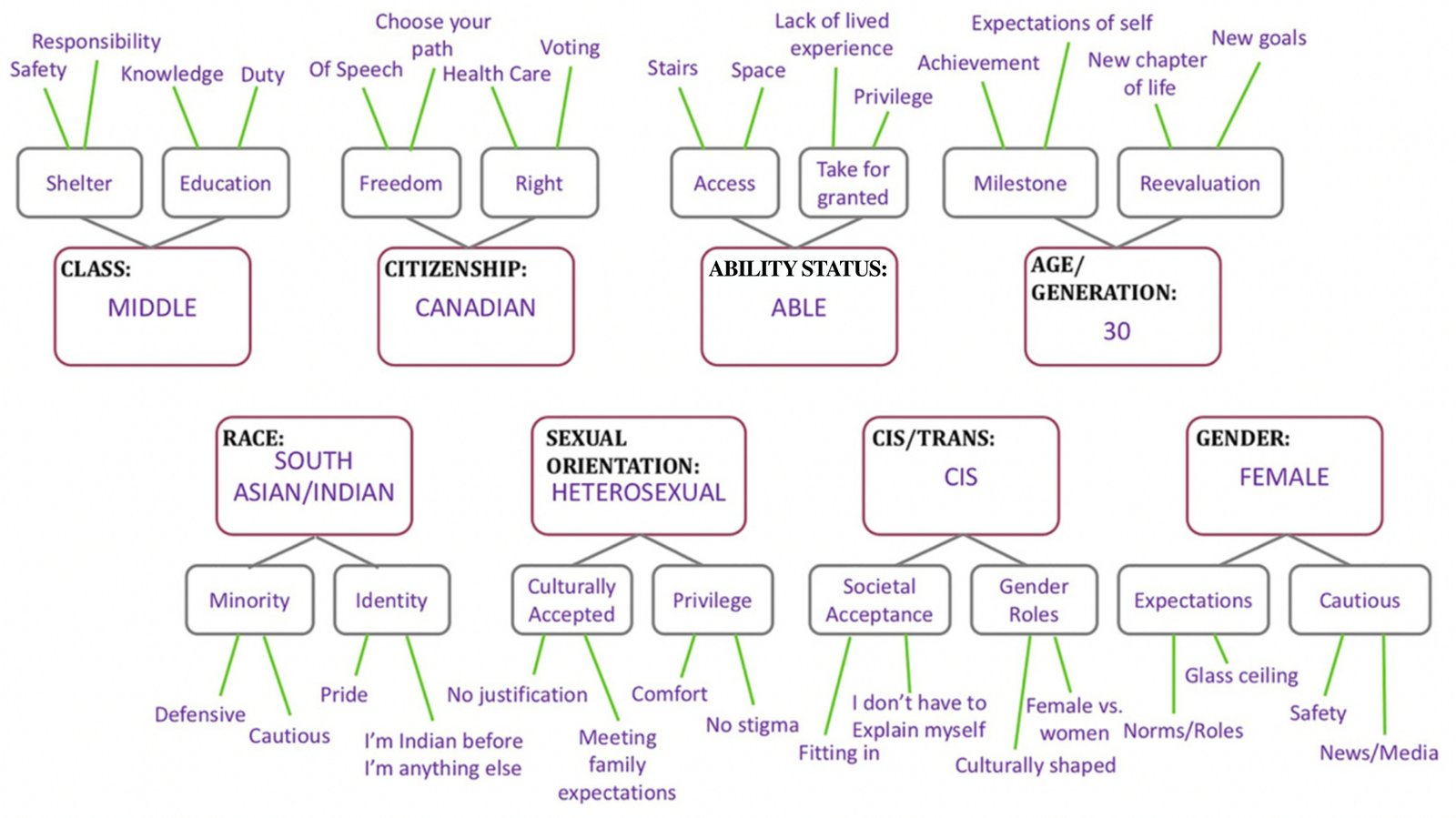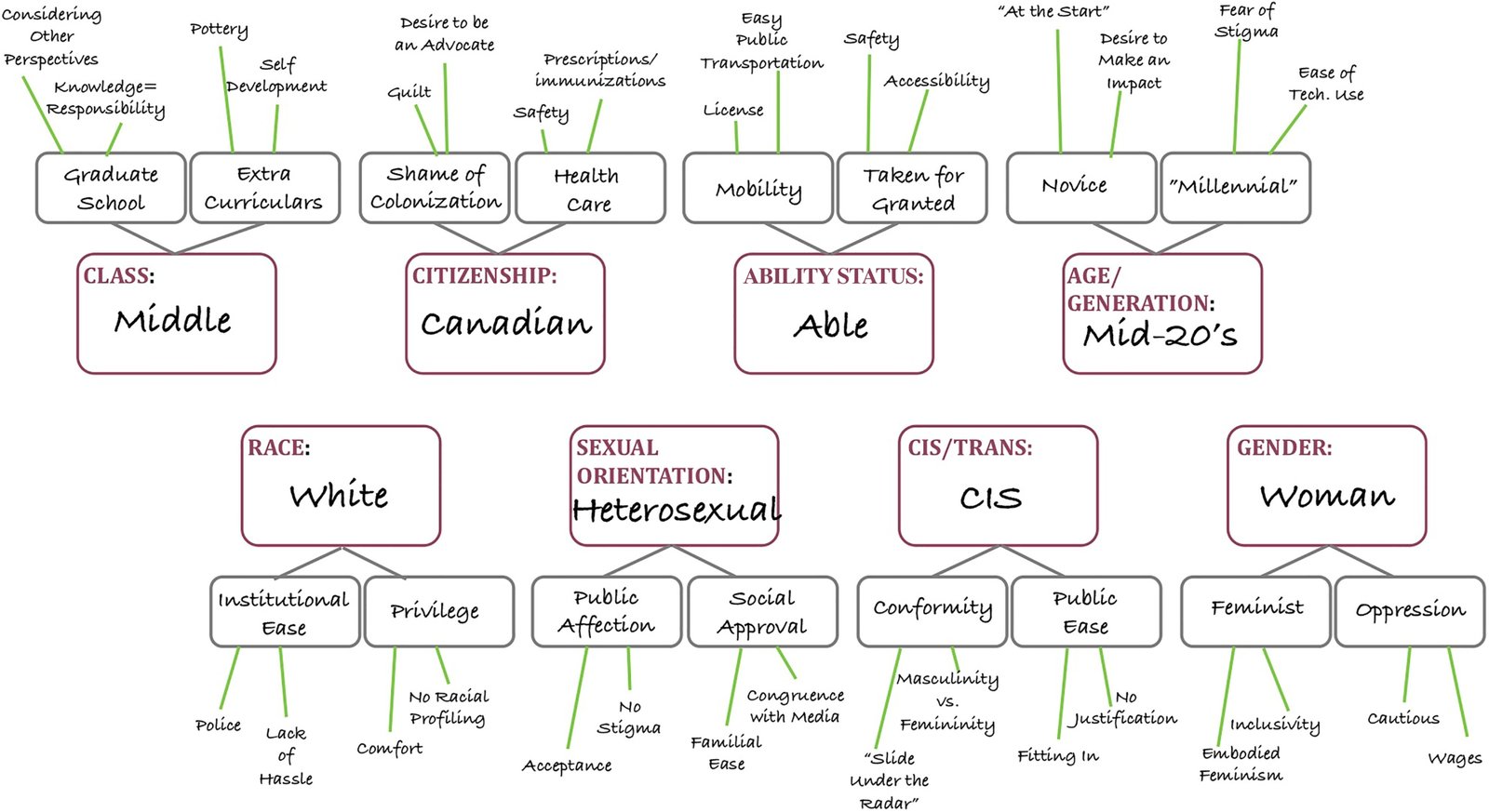Introduction
Research is often characterised as being objective, guided solely by rational considerations of theory and principle. In fact, human beings are never free from bias or preference. These may be unconscious or deeply-held which makes them difficult to challenge or undo. Our biases and preferences are shaped by our experiences from birth and relate to our socio-economic class, our racialised and gendered identity, our disability status, our religious or non-religious beliefs, amongst many other things. These factors influence research practice by guiding the numerous decisions of researchers, such as what to research, whose opinions and theories to follow, how to conduct research, and how to interpret and apply results.
“Reflexivity is the act of examining one’s own assumptions, beliefs, and judgement systems, and thinking carefully and critically about how these influence the research process. The practice of reflexivity confronts and questions who we are as researchers and how this guides our work.” [1]
The following videos will help introduce this subject in more depth.
Reflexivity in Research - Livio Riboli-Sasco
In this video, Dr Livio Riboli-Sasco gives an introduction to the concept of reflexive research in science.
Reflexivity in Qualitative Research - Delve
This video introduces the concept of reflexivity for qualitative research.
The inherent subjectivity of researchers is not necessarily a negative thing, it is an essential part of being human which can enrich and deepen our work. It is, however, crucial that we are reflexive about this; acknowledging and being critical of what our subjective position is. This enables those engaging with our work (ourselves included) to be conscious of its limitations, which makes our work more trustworthy, reliable, and accurate.
Activity
Identity Mapping
See page 10 of the workbook.
Now that you’ve thought a bit about reflexivity in general, complete an identity map to start applying the practice yourself. This exercise should help you start to think about your positionality (who you are in within a socio-political context) and how the different aspects of your identity might influence the work that you do.
The exercise and examples come from ‘Social Identity Map: A Reflexivity Tool for Practicing Explicit Positionality in Critical Qualitative Research’ by Danielle Jacobson and Nida Mustafa. Read their paper for a more in-depth presentation of the exercise, including the background and examples of how to apply it in a research setting.
Have a look at the examples below before filling out your own using this blank template.
- Start by filling out the first tier (largest boxes) in the centre of the map. You can use the same categories as the examples or come up with your own, these should reflect the broader aspects of your social identity.
- In the second tier (medium boxes) you should write down how the aspects in the first tier impact your life.
- In the third tier (branches) you should think about any emotions or personal responses that are tied to the higher tiers. You can also use this tier to start thinking about how these aspects of your identity might affect your research through the way they shape your experiences.


Case Studies
Reflexivity is, by its nature, highly context dependent and we cannot provide examples for every kind of research here. Use the cases studies below as a starting point and think about how these could apply to your work.
Practical Steps and Tools
Include a reflexivity statement in your work, both published and presented. See Know Thyself: How to Write a Reflexivity Statement by Sherry Hamby for an introduction.
Next time you discuss a piece of research with a colleague, challenge yourselves to analyse it using a reflexive lens. You could complete the identity mapping activity (above) together and use this to prompt discussion about the different ways you experience and interpret the research.
References and Further Resources
Watch The Need for Reflexivity, a talk by Dr Supriya Subramani for Black and Brown in Bioethics.
The Eye Regards Itself: Benefits and Challenges of Reflexivity in Qualitative Social Work Research by Barbara Probst reports on a US study of how qualitative researchers practice reflexivity.
A practical guide to reflexivity in qualitative research by Francisco M. Olmos-Vega, et al. provides an introduction, definition and exploration of reflexivity in qualitative research.
The first chapter from How to be a Reflexive Researcher by Paul Hibbert provides a general introduction to the practice of reflexivity.
Why the Data Revolution Needs Qualitative Thinking by Anissa Tanweer, et al. motivates the need for reflexivity in data science.
Model Positionality and Computational Reflexivity: Promoting Reflexivity in Data Science by Scott Allen Cambo and Darren Gergle introduces and adapts the practice of reflexivity for data science and machine learning.
How to Write a Positionality Statement: A Step-by-Step Guide published by The Neuron.